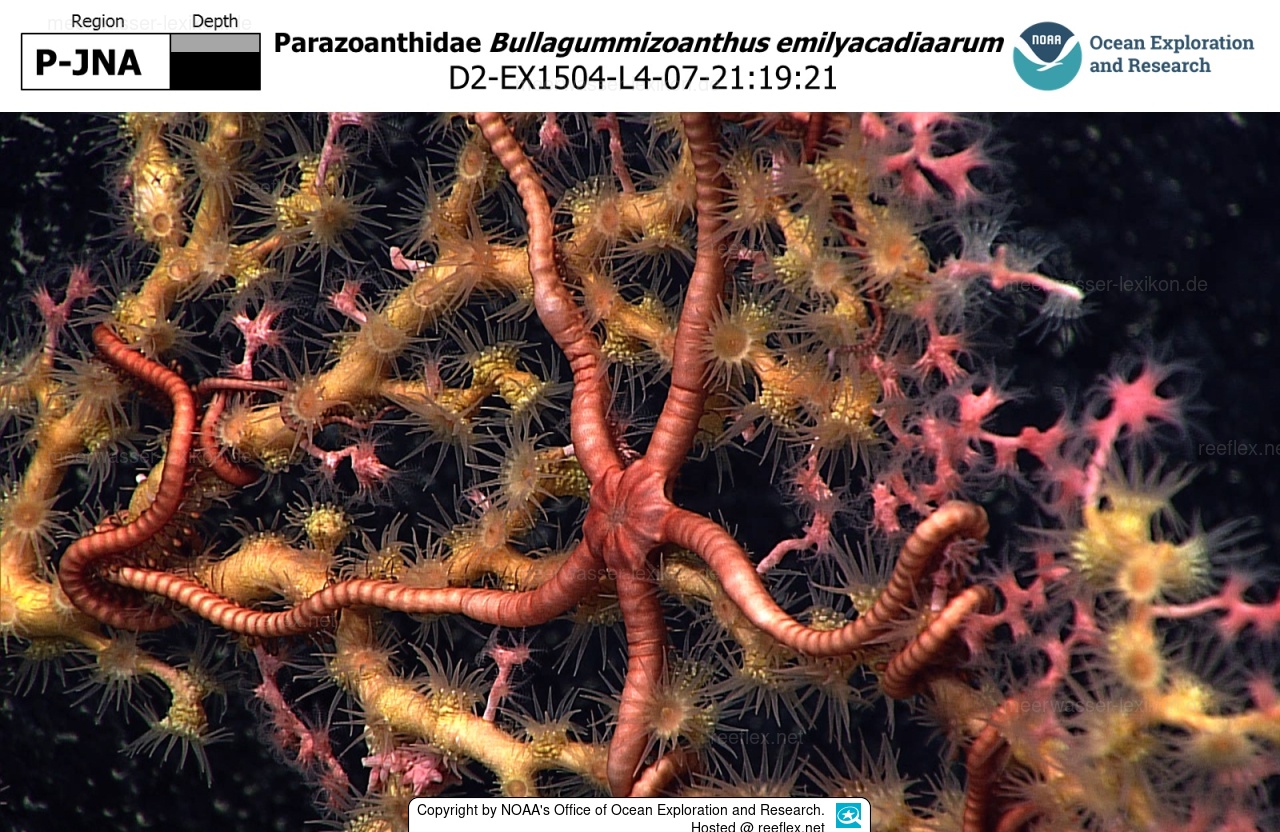Info
This crustose anemone has both an informative genus and species name.
"Bullagum."
The name refers to the relationship of this genus of Zoanthus to the bubble-gum corals (family Paragorgiidae), "bulla" and "gummi" being the Latin words for "bubble" and "gum" respectively, and - "zoanthus", a common suffix to generic names in the order, historically referring to the flower-like appearance of the animal polyps.
"emilyacadiaarum":
This species is dedicated to Emily and Acadia Baco-Taylor, both of whom were born during taxonomic studies of these Hawaiiian species and have positive cabs toward Bubble Gum.
The deep-sea zoanthid anemone colonizes a Paragorgiidae, probably Paragorgia coralloides, but further studies are needed to determine the nature of the relationship between the two corals (symbiotic, parasitic, eusymbiotic, or other relationships....).
The polyps of the crustose anemone are bright yellow, in contrast to the bright red of the host coral.
Deep-water corals do not contain energy-providing zooxanthellae due to lack of light and must generate their life energy by catching marine plankton or marine snow.
"Bullagum."
The name refers to the relationship of this genus of Zoanthus to the bubble-gum corals (family Paragorgiidae), "bulla" and "gummi" being the Latin words for "bubble" and "gum" respectively, and - "zoanthus", a common suffix to generic names in the order, historically referring to the flower-like appearance of the animal polyps.
"emilyacadiaarum":
This species is dedicated to Emily and Acadia Baco-Taylor, both of whom were born during taxonomic studies of these Hawaiiian species and have positive cabs toward Bubble Gum.
The deep-sea zoanthid anemone colonizes a Paragorgiidae, probably Paragorgia coralloides, but further studies are needed to determine the nature of the relationship between the two corals (symbiotic, parasitic, eusymbiotic, or other relationships....).
The polyps of the crustose anemone are bright yellow, in contrast to the bright red of the host coral.
Deep-water corals do not contain energy-providing zooxanthellae due to lack of light and must generate their life energy by catching marine plankton or marine snow.







 NOAA's Office of Ocean Exploration and Research
NOAA's Office of Ocean Exploration and Research


